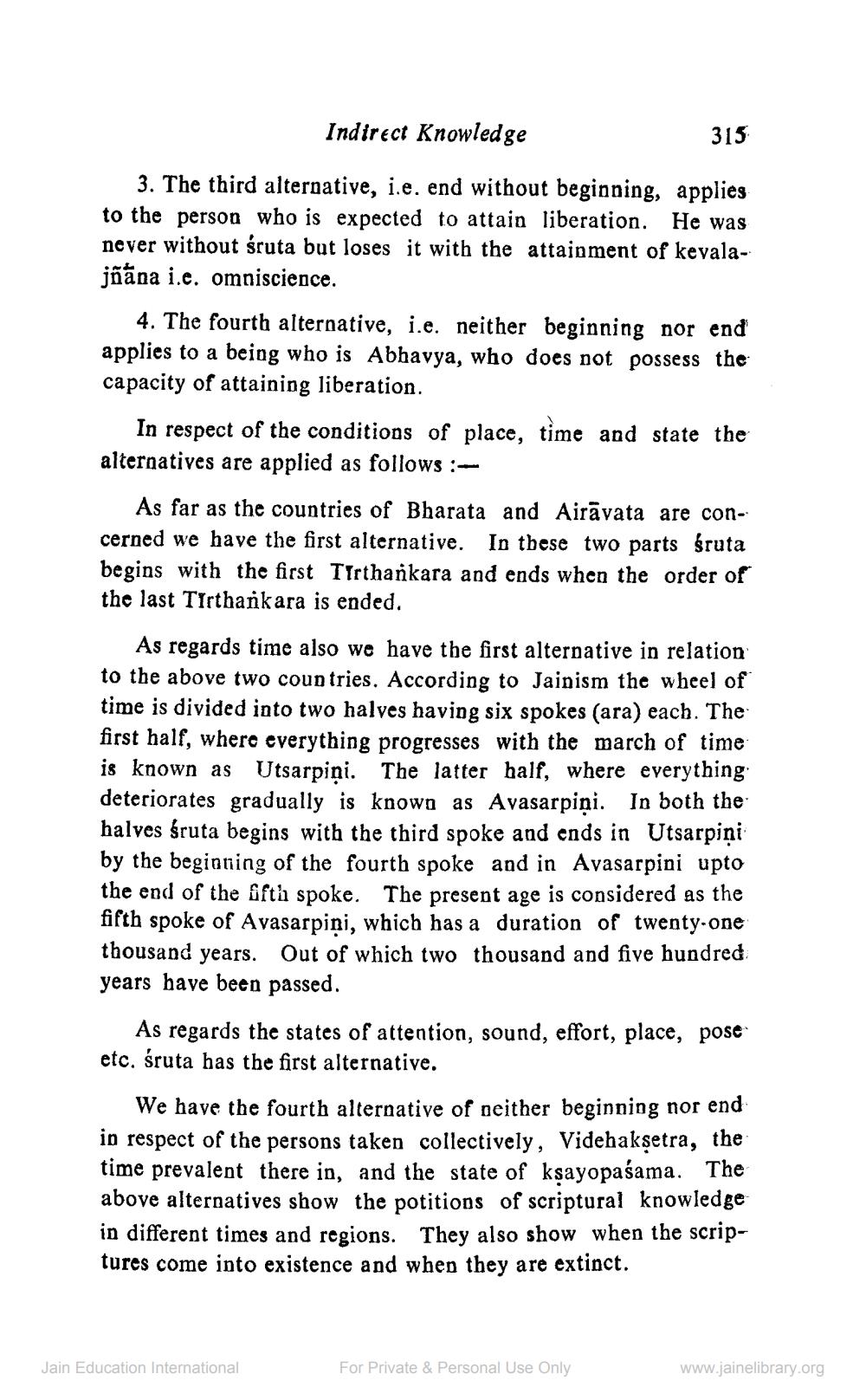________________
Indirect Knowledge
315
3. The third alternative, i.e. end without beginning, applies to the person who is expected to attain liberation. He was never without śruta but loses it with the attainment of kevalajñāna i.e. omniscience.
4. The fourth alternative, i.e. neither beginning nor end applies to a being who is Abhavya, who does not possess the capacity of attaining liberation.
In respect of the conditions of place, time and state the alternatives are applied as follows:
As far as the countries of Bharata and Airāvata are concerned we have the first alternative. In these two parts śruta begins with the first Tirthankara and ends when the order of the last Tirthankara is ended.
As regards time also we have the first alternative in relation to the above two countries. According to Jainism the wheel of time is divided into two halves having six spokes (ara) each. The first half, where everything progresses with the march of time is known as Utsarpiņi. The latter half, where everything deteriorates gradually is known as Avasarpiņi. In both the halves śruta begins with the third spoke and ends in Utsarpiņi by the beginning of the fourth spoke and in Avasarpini upto the end of the ofta spoke. The present age is considered as the fifth spoke of Avasarpini, which has a duration of twenty.one thousand years. Out of which two thousand and five hundred years have been passed.
As regards the states of attention, sound, effort, place, pose etc. śruta has the first alternative.
We have the fourth alternative of neither beginning nor end in respect of the persons taken collectively, Videhakşetra, the time prevalent there in, and the state of ksayopaśama. The above alternatives show the potitions of scriptural knowledge in different times and regions. They also show when the scriptures come into existence and when they are extinct.
Jain Education International
For Private & Personal Use Only
www.jainelibrary.org




